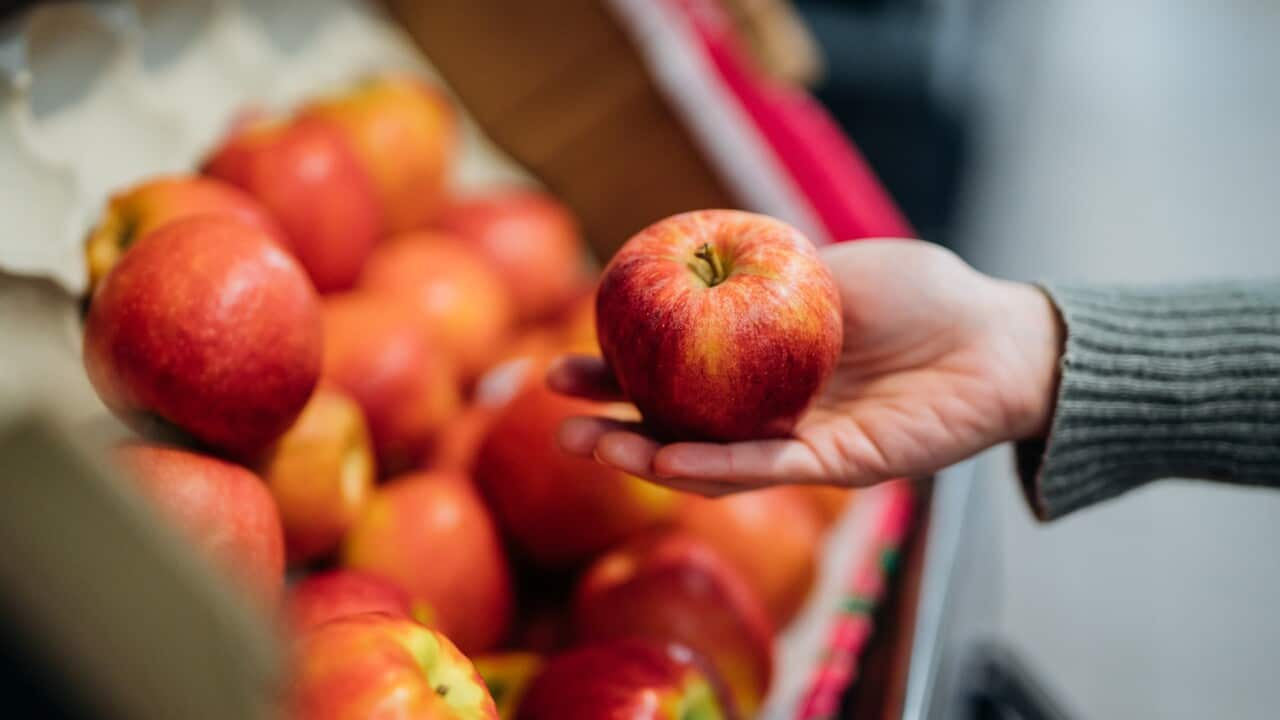Learning highlights:
- An adjective describes a noun (a thing or a person).
- Stacking adjectives means using more than one adjective in a special order.
- This lesson suits intermediate learners.
Transcript:
(Note: This is not a word-for-word transcript)
Hi everyone, and welcome to the BAD ENGLISH MADE BETTER podcast.
This is a show of tips and tricks for people learning English. It's for intermediate (or medium) level learners. But if you’re a beginner, why not stay and listen to challenge yourself?
I’m Ai-Lin. I’m an English teacher, and I’ll be guiding you through a different lesson each episode to help us make BAD ENGLISH BETTER.
And, today, it’s all about adjectives… they’re words that just, well, make everything more interesting… tastier, smellier, better looking.
Here’s the thing about adjectives…
An adjective describes a noun, a noun is a thing or a person.
An adjective tells us how the noun looks, feels, tastes, smells or sounds.
Let me give you an example…
Apple
An apple is a noun – a thing.
We can describe it as a red apple; a sweet apple = sounds yummy
Or we can describe it as a brown apple, a rotten apple = yuk, I’m not going to eat that!
So, adjectives are important because they give you information about nouns.
So, now you know what they are, the next thing you need to know is how we use adjectives and where they go in a sentence.
The rule is that an adjective comes just before the noun which it describes.
So, we say: I eat sweet, red apples
We don’t say: I eat apples sweet, red
But, because it’s English, the rule is always going to have an exception, isn’t it?
Yes, sorry about that.
So, the exception to the rule is when we use the verb ‘to be’... (as in am, are, or is…). That’s when the adjective comes after the verb.
So, we say: I eat apples that are red
It’s the same when we use what’s called a “sense” verb… with words like seems, looks, tastes, feels, sounds, smells.
For example: This apple tastes sweet
Using both rules, we can put the two ideas together and say… This red apple tastes sweet
So, adjectives can help us make our sentences richer and help us describe things in more detail.
And they can get pretty interesting, especially when you start “stacking” them.
What am I talking about?
Well, stacking adjectives is just a fancy way to describe when using more than one adjective.
It’s one of the rules that someone who has grown up speaking English never actually learns, they just work it out from hearing it.
But for the rest of us who want to get this right, adjectives go in a special order.
Now, I’m going to ask you to hit PAUSE on the podcast right now and grab a piece of paper so you can write this down…
So, you ready? Here it comes… the correct Order of Adjectives:
Opinion – Size – Shape – Age – colour – Origin – Material – Purpose
Let’s just go through what each category means…
- Opinion – What we think about something. Is it beautiful, wonderful, comfortable?
- Size – That’s pretty simple. Is it small, big, tall, short, long?
- Shape – Is it round, square, flat?
- Age – young, old, new, 12-year-old, 300-year-old
- Colour – Again, self-explanatory. Red, yellow, brown, black, blue
- Origin – Where does it come from? Australian, Vietnamese, Arabic, Korean?
- Material – What’s it made of? Is it wooden, silk, cotton, metal?
- Purpose – What is it used for? Roasting, sports, dancing… the list goes on.
Okay, Still got your pen there? Here’s a little exercise to see if we can put our stacked adjectives in the correct order.
So, our noun is… Apple
And we’re going to use these Adjectives – red, small, cooking, Australian, round
Got that? So, take a moment, PAUSE the podcast again, refer to our list from before and see if we can get them in the right order.
A small, round, red, Australian, cooking apple = Now it sounds natural.
‘Cause it’s in the right order… Size – Shape – colour – origin – purpose.
And, just a reminder here, we don’t normally use five adjectives in a row. Even three is a lot.
So, let’s try some other quick examples…
These ones are not so long so you won’t need your pen.
Okay, the noun is… a dress. The adjectives – blue, cotton, new
Can you guess it? The order that sounds best?
Okay, who got… A new, blue, cotton dress?
One more quickie…
So, the Noun is… a car. Adjectives – sports, old, British
Did you get this one? Top of the class if you picked…
An old, British, sports car.
That feels like enough for one day.
Look, you don’t need to walk around with a list, but whenever you do listen or read English, it’s good to notice the order in which adjectives are stacked.
The more you notice, the more you’ll feel what sounds natural.
Thanks for listening to BAD ENGLISH MADE BETTER.
This show was recorded on the lands of the Wurundjeri Woi-Wurrung people of the Kulin nation.
SBS acknowledges the traditional owners and pays our respects to the elders past, present and emerging.
And, if you’re looking for more help learning English, check out the SBS Learn English website for fantastic videos and more mini podcast series like this one.
I’m your host and teacher Ai-Lin Bughun. Catch you next time.
RELATED CONTENT

How would you like your adjectives stacked?
Credits:
Host: Ai-lin Bhugun
Voices: Dory Wang, Luke James
Producer: Ian Walker - Ear Candy Media







